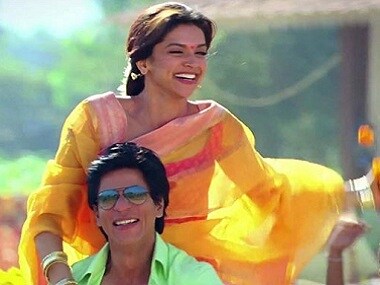International Women's Day: Bollywood needs more female filmmakers to make way for engaging, inclusive cinema
Fair treatment for women in the workplace, and standing up against sexual abuse, has taken center stage in Hollywood and American television — the most powerful entertainment industry in our world. However the more alarming trend is fewer women directors making films; they are either non-existent or very small in number. A study by a California university establishes that of 250 top films made in Hollywood in 2015, 2016 and 2017, a woman director was in charge of less than 9 percent of these.
As this year’s Oscar nominations reflect, women in Hollywood hold a very small share of key technical professions. A female cinematographer (Rachel Morrison for Mudbound) got nominated for an Oscar for the first time in 90 years; and a woman director (Greta Gerwig for Lady Bird) was nominated in the main category, making her only the 5th in its history.
Here in India, Bollywood or the Hindi film industry, is the most prolific and powerful amidst many regional film cottage industries. The scenario is not very different here either. In terms of proportion and success women directors have an impressive record. Yet, the number of female directors remains low.
In 2018, two films that hold promise — Raazi starring Alia Bhatt and Vicky Kaushal and Gold starring Akshay Kumar and Mouni Roy — have female filmmakers in charge. Meghna Gulzar has delivered the precise and well structured Talvar and Reema Kagti co-writes and directs interesting, un-clichéd stories (Talaash, Dil Dhadakne Do). And then there’s Zoya Akhtar, currently directing Gully Boy with Ranveer Singh and Alia Bhatt. Another female director that has stood out in recent years is Gauri Shinde (English Vinglish, Dear Zindagi).
In previous years, women directors have made impact with their uncommon films, despite being few in numbers. Alankrita Srivastava made Lipstick Under My Burkha, a poignant yet funny film that encapsulates female desire. At MAMI 2017, Rima Das won top honors for her indie film, Village Rockstars, based in Assam. In 2016, Konkona Sen Sharma delivered the brilliant drama, A Death in the Gunj. Women have made a mark by telling cinematic stories with a signature touch.
However, it’s not easy for women to become directors in India. And the key roadblock seems to be perception, not always opportunity.
On any film set, one typically will see more male assistant directors (or ADs) then females. A demanding job, an assistant director is in charge of mundane but key aspects of filmmaking (coordinating costumes, call times of actors and supporting cast, scheduling shoots, planning rest days and regular days, also planning meals and F&B). Beyond creative, an AD has to be efficient and well coordinated. Young women are often seen to be in charge of costumes, styling, hair and managing a star or actor. But the role of an AD often belongs to men. Perhaps it’s got to do with the fact that women are perceived to be more inclined towards managing the aesthetic and temperamental (read movie stars), rather than grunt work. But a significant aspect of more men becoming assistant directors, and thereafter filmmakers, has to do with the fraternal, boys club aspect of it.
Having tracked cinema for a while and having interacted with professionals on set and otherwise, an amusing but definite fact is the cliché that is used to describe female directors. A demanding woman in charge of a film is called ‘short tempered’, ‘has tantrums’, ‘tough’ and ‘ranting’ by anyone who is slightly disgruntled. The image one comes back with is that of a ball-busting banshee.
But in reality, male filmmakers can also be prone to conflict, fits of rage, frustration and anger just as much as a woman. A film — given pressures of starry demands, tight schedules and real life, last minute alterations — is a living, moving organism when on floors. The stress of making one can lead to temper fits and mood swings. Yet, a woman displaying some of it is ridiculed and discussed a lot more.
To have more female filmmakers, who will be treated as equals and given a fair chance, in both Hollywood and Bollywood, would open up the gamut to more for all. If in the process, their films bring in larger audiences of women, like Patty Jenkins did with Wonder Woman, that would prove to be an added bonus to a larger than life medium that has been steadily losing audiences to streaming platforms and TV in recent years.
Published Date: Mar 08, 2018 17:11 PM | Updated Date: Mar 08, 2018 17:11 PM



